With thousands of acres of land under water, farmers of crops and livestock are counting the costs. And the retailers have been responding
As if challenges around profitability, soaring costs and ongoing labour issues weren’t enough to stomach, farmers and food producers have yet again been counting the cost of extreme weather in recent months.
In addition to being the UK’s second warmest year on record, 2023 was also among the country’s wettest, according to the Met Office, as the impact of climate change made itself known.
rainfall was 11% higher than average, with the year including the UK’s sixth wettest March and July, and joint-sixth wettest October.
Fuelled by what the Met Office has described as a series of “impactful storms” in the run-up to Christmas, countless farms across the country were already under water by the start of a sodden December – which experienced monthly rainfall some 48% higher than average.

And with the country then buffeted by Storm Henk at the turn of the year, it’s been a miserable period for farmers across the country.
Thousands of acres of productive farmland are still underwater, according to the NFU. And as The Grocer reported last week, the prospect of an increase in imported fresh food and even shortages of some crops is now very real.
So, with plummeting temperatures now adding to the headaches of producers, just how bad does the situation look across the UK?
Vegetables
Sector insiders warn it’s too early to understand the full impact of the floods and months of rain, but there is now an “increasing sense of doom and gloom about the weather” and its impact on food production, one senior food sector source tells The Grocer.
Crops ranging from carrots to potatoes, brassicas and leeks have thus far borne the brunt of the floods, particularly across much of the north of England, the Midlands and the east of England, says the NFU.
And the threat of flooding on already saturated ground has remained real over the past week, according to Defra, with 52 flood warnings still in place as of 12 December.
The main issue for many growers is “how to get produce out of the fields” and what condition it will be in, suggests Jack Ward, CEO of the British Growers Association.
“Supplies were already short over the back end of last year due to problems with planting during the heatwave in July and then amid all the rain in September,” he adds.
His comments are echoed by Tim O’Malley, group MD of Nationwide Produce, who says the repercussions of the wet weather will be “substantial, resulting in reduced yields due to crops submerged in water”.
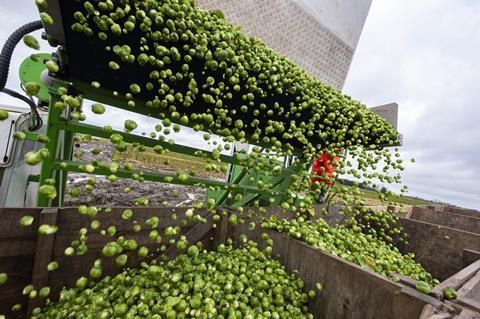
NFU deputy president Tom Bradshaw warns the situation will bring “huge financial stress and misery” to growers.
“This constant wet weather again highlights the need for government to recognise the strategic importance of domestic food production and urgently deliver solutions to mitigate the impact of flooding of farmland,” he adds.
Even if the rain has now paused in parts of the country, the worst may not be over.
Frosts over the past week could be “catastrophic as submerged carrots and parsnips would suffer significant damage”, O’Malley warns.
The BGA’s Ward, meanwhile, says growers are in the dark over whether the impact of flooding could stretch into the new season in the spring. Some 20% of this year’s potato crops are still in the ground, and it will be “a miracle” if any of it is usable, he suggests.
And with weather forecasts remaining volatile, the situation is now hugely concerning, he adds. “Eighteen months ago we were having conversations around how to mitigate drought, now we have flooding. The forecast for next week is 55mph winds, so the weather is just horrendous.”
Fruit
Wet weather has also hit fruit production, particularly across the already struggling apple sector, according to Ali Capper, executive chair of trade association British Apples & Pears.
Trees standing in wet soil are at risk of root rot, she says. The last time it was a particularly wet season, in 2019, Capper lost 25% of her Braeburn orchard because the “roots just sat in wet water too long and it stresses the trees out and then they die”.
She says it will be difficult to know if this will happen this year until spring.
And she warns that if rain continues over the next two months “our orchard will be in trouble, and some may already be in trouble”.
Cereals & oilseeds
The senior food sector source says cereals are also struggling due to the fact “there is not enough seed available to sow spring crop”, while large tracts of ground are “already written off”.
“So it will be tough to sow more to make up for this. Spring crops also yield less when they’re drilled in winter.
“And there are crops still not harvested, especially sugar beet.”
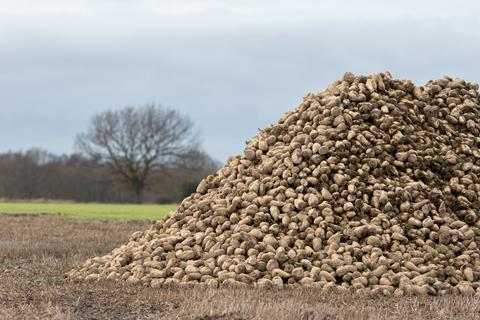
AHDB backs this up, with senior analyst Helen Plant pointing to an “expectation in industry that production of wheat and oilseed rape will be down year on year”.
“UK feed wheat futures prices are already above Paris milling wheat futures [the European benchmark] for harvest in 2024,” due to the anticipation of a smaller UK crop, she adds.
Livestock
Many farmers will have taken their animals inside during the wet weather. But livestock is nevertheless at a heightened risk of disease in current conditions.
There is now mounting concern over the impact of bluetongue in livestock, with more than 40 cases confirmed on over 20 premises, according to Defra’s Animal & Plant Health Agency.
Bluetongue can cause infertility and breathing problems among a number of animals, including sheep, cattle and goats.
And while it is not transmissible to humans, the spread of the disease – through infected ticks, particularly in warm and damp conditions – can “impact on the logistics of supply due to the implementation of control zones”, says British Meat Processors Association CEO Nick Allen.
“We will be lucky if we get to spring without a big outbreak,” Allen says. “We’re steeling ourselves for that, but it could be a nightmare for supply.”
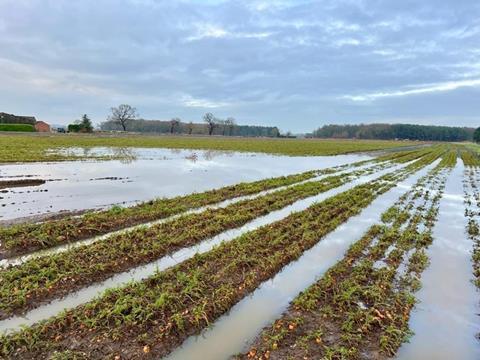
Retailer response
All of this has already prompted a significant response from major supermarkets.
The likes of Asda, Morrisons, Waitrose, Lidl, Tesco and Sainsbury’s all told The Grocer this week they had moved to relax specifications on impacted crops, with an increase in under or oversized and misshapen produce currently sold in stores.
Despite the conditions faced by their suppliers, they were all keen to stress there was currently no need to panic on the issue of fresh produce shortages.
John Moulding, commercial director of grower TH Clements, which has lost about 20% of its total winter crops including sprouts, cabbages, cauliflower and leeks, says: “It’s been a very tough time for us for more than three months, both physically and financially in having to pull the vegetables out of the muddy fields.
“But the flexibility Tesco has given us has allowed us to maximise the amount of product we can get on their shelves.”



![XOXO-Product-Shot[ALL FLAVOUR]-Sky-1920x1080](https://dmrqkbkq8el9i.cloudfront.net/Pictures/274x183/4/9/2/355492_xoxoproductshotallflavoursky1920x1080_806584_crop.jpg)




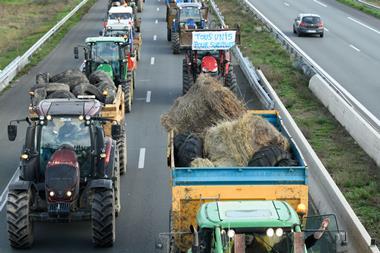
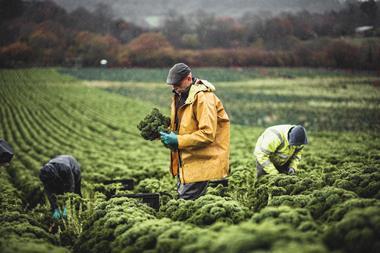









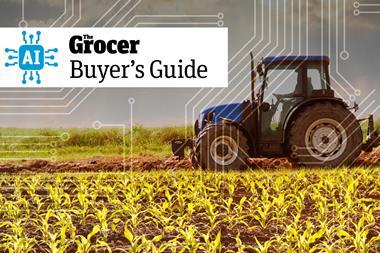
No comments yet